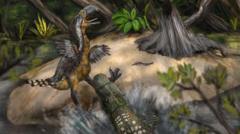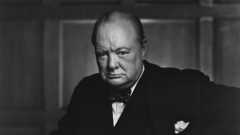Holly's Haven, a wildlife rehabilitation center in the outskirts of Ottawa, is home to a diverse array of animals, including coyotes, porcupines, and countless raccoons and skunks. However, none capture as much attention as Cedar, a blind moose calf with a leg injury, who is approximately six weeks old.
Cedar's arrival has prompted the founder and director of operations, Lynne Rowe, to swiftly educate herself about the specific needs of young moose. Unfortunately, Cedar's condition presents a significant challenge, as the center typically aims to return all rehabilitated animals to the wild once they are healthy enough to survive on their own.
Experts have determined that Cedar’s vision, restricted to only a glimpse of light from his right eye, makes it unsafe for him to be released. Young moose, especially, fall prey to predators like coyotes and wolves and Cedar's inability to navigate his environment effectively means a wild return would likely result in his demise.
At present, Cedar weighs a little over 30 kilograms, but he has the potential to grow to 700 kilograms as an adult. His story resonates with Holly, the center's namesake raccoon, who endured her own challenges due to brain damage that left her unable to thrive in the wild. As Rowe watches Cedar relish his diet of willow branches, she is reminded of the tough choices faced by rescue centers. Cedar's journey represents not just a struggle for survival, but also the resilience of wildlife and the dedication of those who care for them.
Cedar's arrival has prompted the founder and director of operations, Lynne Rowe, to swiftly educate herself about the specific needs of young moose. Unfortunately, Cedar's condition presents a significant challenge, as the center typically aims to return all rehabilitated animals to the wild once they are healthy enough to survive on their own.
Experts have determined that Cedar’s vision, restricted to only a glimpse of light from his right eye, makes it unsafe for him to be released. Young moose, especially, fall prey to predators like coyotes and wolves and Cedar's inability to navigate his environment effectively means a wild return would likely result in his demise.
At present, Cedar weighs a little over 30 kilograms, but he has the potential to grow to 700 kilograms as an adult. His story resonates with Holly, the center's namesake raccoon, who endured her own challenges due to brain damage that left her unable to thrive in the wild. As Rowe watches Cedar relish his diet of willow branches, she is reminded of the tough choices faced by rescue centers. Cedar's journey represents not just a struggle for survival, but also the resilience of wildlife and the dedication of those who care for them.



















